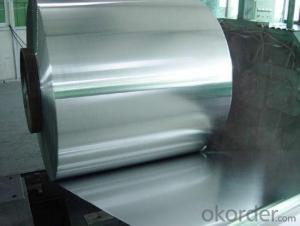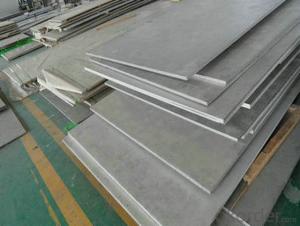Stainless Steel Sheet and Plate with Polishing Treatment
- Loading Port:
- Shanghai
- Payment Terms:
- TT OR LC
- Min Order Qty:
- 10000 m.t.
- Supply Capability:
- 5000000 m.t./month
OKorder Service Pledge
OKorder Financial Service
You Might Also Like
Specifications of stainless steel
304 stainless Steel Plate
stainless steel plate,steel sheet,steel plate
Standard: ASTM,GB,DIN,JIS,ISO,EN,etc.
TISCO stainless Steel Plate 304/NO.1 finished
stainless steel plate,steel sheet,steel plate
Standard: ASTM,GB,DIN,JIS,ISO,EN,etc.
Delivery short and low cost advantage.
Description of stainless steel:
stainless steel plate,hot rolled stainless steel plate,cold rolled stainless steel plate,stainless steel sheet,steel sheet,sheet
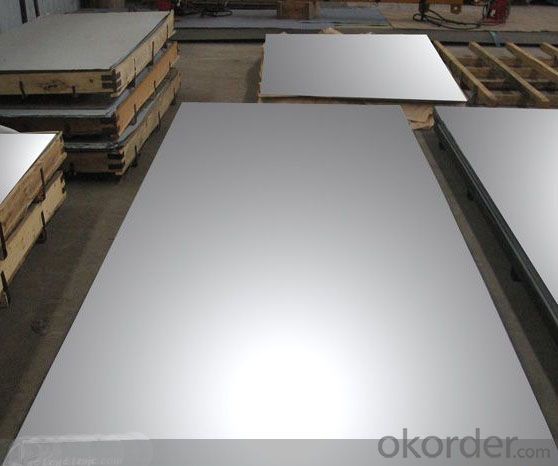
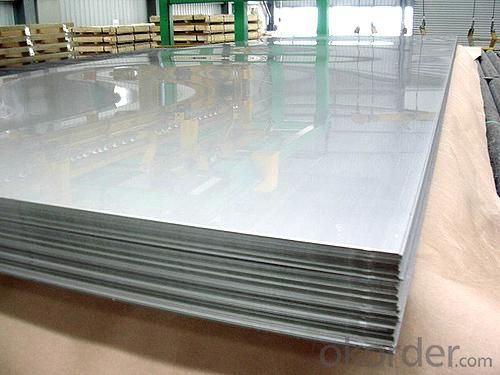

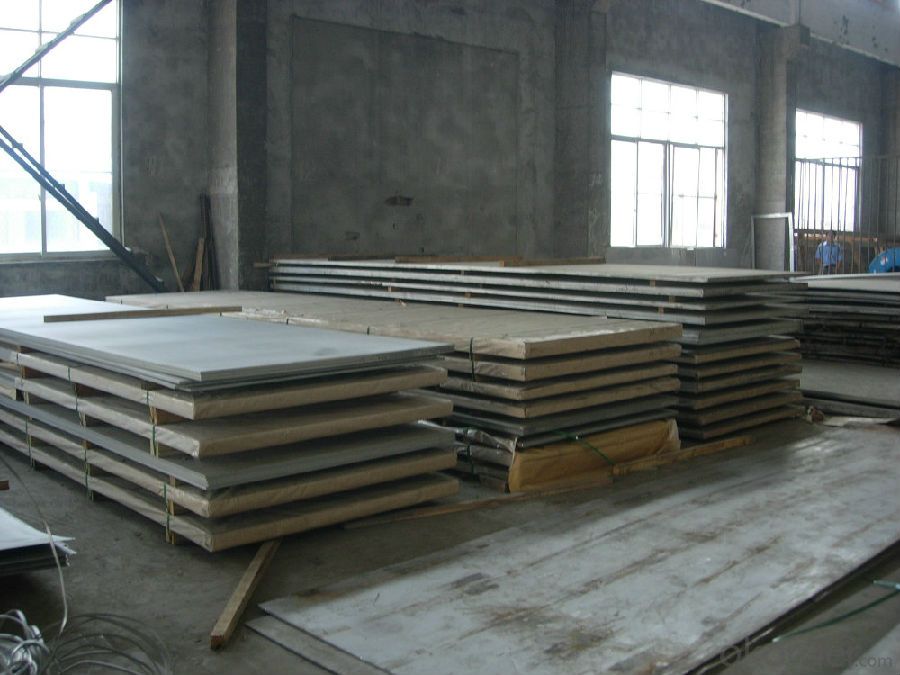
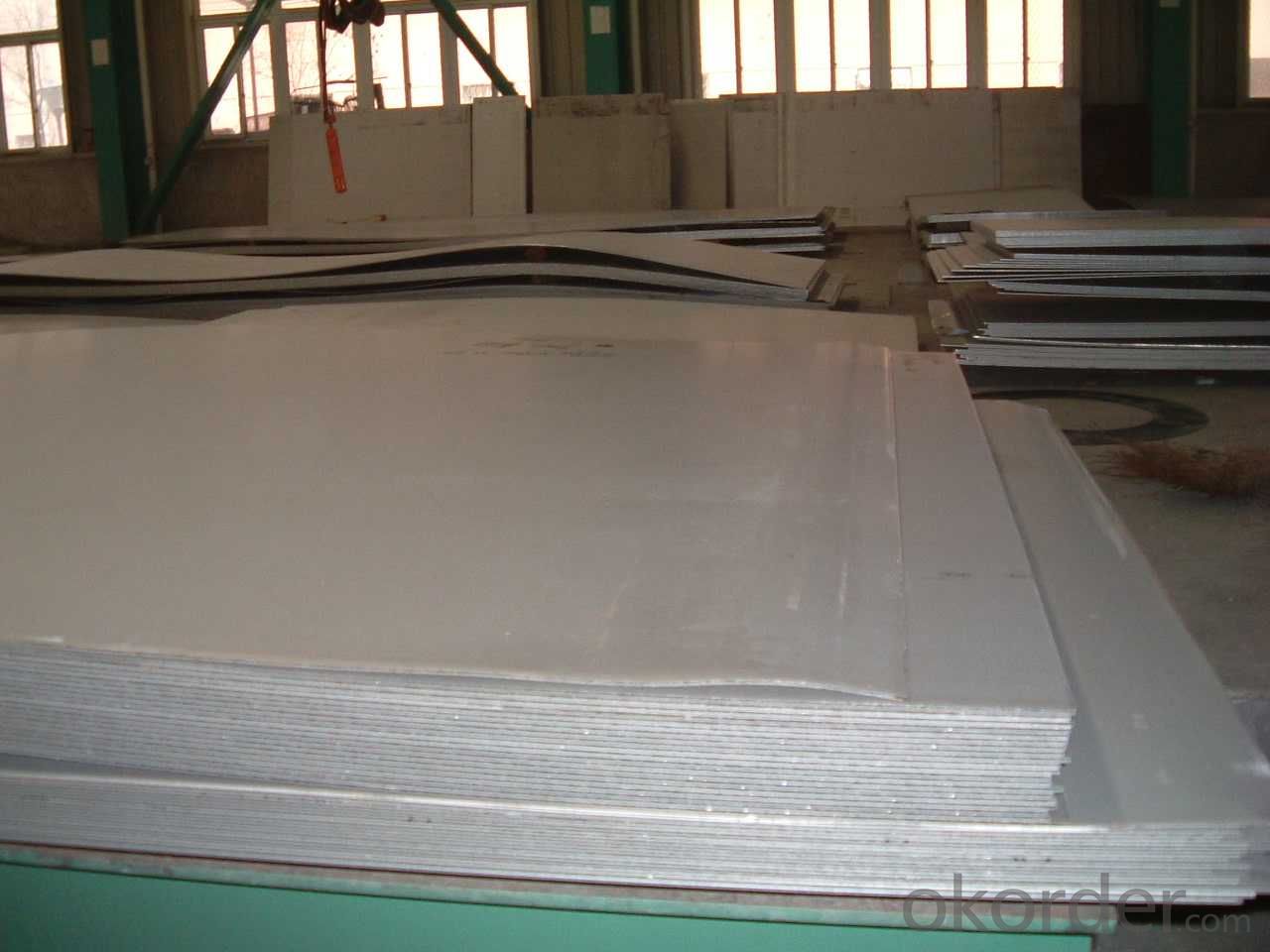
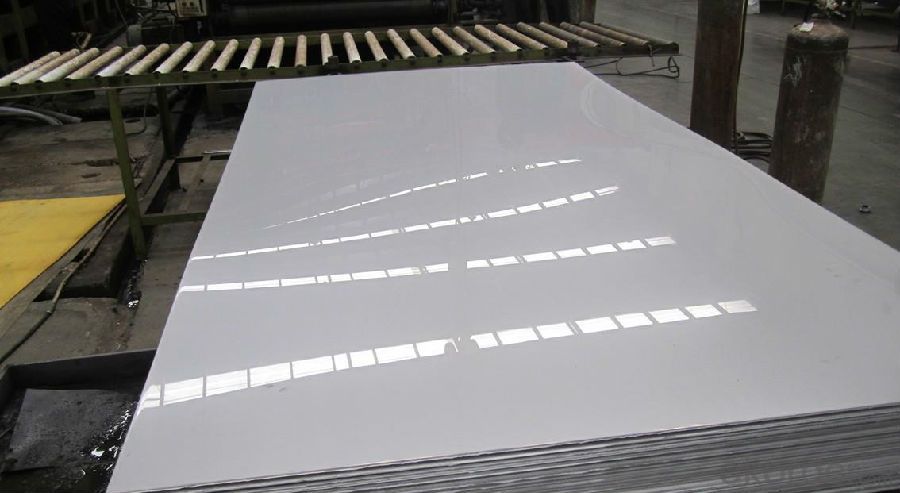
Material of stainless steel:
304,304L,309S,310S,316,316L,316Ti,317L,317L,321,347H,409,409L,410S,420,430,201,202,etc.
Thickness of stainless steel:
From 0.3mm to 100mm
Width of stainless steel:
1000mm,1219mm,1250mm,1500mm,1800mm,2200mm,2500mm or as your requirement
Length of stainless steel:
2000mm,2438mm,2500mm,6000mm,6096mm or as your requirement
Application of stainless steel:
Stainless steel plate applies to construction field, ships building industry, petroleum & chemical industries, war and electricity industries, food processing and medical industry, boiler heat exchanger, machinery and hardware fields. Our company has cooperative relation between the domestic agents. Stainless steel plate can be made accordingto the customers requirements. Fasten delivery. Quality assured.Welcome to order more.
Contacts
If you have any question,please feel free to contact us.
- Q:Can stainless steel sheets be used for outdoor furniture or fixtures?
- Outdoor furniture or fixtures can indeed utilize stainless steel sheets. Stainless steel, being a material highly resistant to corrosion and exceptionally durable, makes it perfect for outdoor applications. Its resistance to rust enables it to endure different weather conditions, such as rain, snow, and high humidity. Furthermore, stainless steel possesses a sleek and contemporary look, which contributes to its popularity as a preferred option for outdoor furniture and fixtures. Its strength, longevity, and ability to withstand environmental factors explain why it is frequently employed in constructing outdoor tables, chairs, benches, grills, and other fixtures.
- Q:Are stainless steel sheets good for heat exchangers?
- Yes, stainless steel sheets are good for heat exchangers. Stainless steel is a popular choice for heat exchangers due to its excellent corrosion resistance, high temperature resistance, and strength. It can withstand extreme temperatures and pressures, making it ideal for various industrial applications. Additionally, stainless steel sheets offer good thermal conductivity, allowing for efficient heat transfer between fluids. Their durability and resistance to fouling and scaling also contribute to their suitability for heat exchangers, ensuring long-term performance and reliability.
- Q:Are stainless steel sheets suitable for brewing equipment?
- Stainless steel sheets are indeed an excellent choice for brewing equipment. With its outstanding corrosion resistance, durability, and hygienic properties, stainless steel has become a popular material for such equipment. It is highly resistant to rust, stains, and chemical reactions, making it perfect for contact with liquids and food-grade applications. Moreover, stainless steel sheets offer a smooth and non-porous surface, preventing the growth of bacteria and enabling effortless cleaning and sanitation. In addition, stainless steel can withstand the high temperatures involved in brewing processes without warping or deforming, thanks to its remarkable heat resistance. In sum, stainless steel sheets are a dependable and enduring option for brewing equipment.
- Q:What is stainless steel plate wire?
- A filament is a unit of length.In mathematics 10 decimillimeter centimillimeter decimillimeter =1 mm, 10 =1
- Q:How do you remove stains or marks from stainless steel sheets?
- To effectively eliminate stains or marks from stainless steel sheets, follow these step-by-step instructions: 1. Begin by identifying the specific type of stain or mark present on the stainless steel sheet. Common examples include water spots, fingerprints, grease, or rust. 2. For general cleaning purposes, utilize a soft cloth or sponge soaked in warm water and mild dish soap. Gently wipe the stainless steel surface, ensuring to follow the grain to prevent scratching. Thoroughly rinse with clean water and dry using a soft cloth. 3. To tackle more stubborn stains or marks, create a paste by combining baking soda and water. Apply the paste to the affected area and gently rub it in using a soft cloth or sponge. Rinse off the paste with warm water and dry using a soft cloth. 4. For persistent grease stains, concoct a mixture of vinegar and water. Apply the vinegar solution to the stain and allow it to sit for a few minutes. Tenderly scrub the area with a soft cloth or sponge, following the grain of the stainless steel. Rinse thoroughly with clean water and dry. 5. In the case of rust stains, employ a mixture of lemon juice and cream of tartar. Apply the mixture to the stain and let it sit for a few minutes. Gently scrub the area with a soft cloth or sponge, following the grain. Rinse thoroughly with clean water and dry. 6. If stubborn stains persist despite the previous methods, resort to a stainless steel cleaner specifically designed for stain and mark removal. Adhere to the instructions provided with the cleaner and ensure thorough rinsing and drying of the surface afterward. Always remember to test any cleaning solution or method on a small, inconspicuous area of the stainless steel sheet before applying it to the entire surface. Additionally, refrain from using abrasive cleaners or scrubbing pads as they can cause scratches on the stainless steel.
- Q:What is the impact resistance of stainless steel sheets?
- Stainless steel sheets have a high impact resistance due to their unique properties and composition. The impact resistance refers to the ability of a material to withstand sudden loads or forces without breaking or deforming permanently. Stainless steel sheets possess excellent toughness and durability, making them highly resistant to impact. The impact resistance of stainless steel sheets can be attributed to their high tensile strength and ductility. Stainless steel is an alloy that contains iron, chromium, and other elements, which impart its strength and corrosion resistance. The addition of chromium forms a protective oxide layer on the surface of the steel, preventing it from rusting or corroding easily. Furthermore, stainless steel sheets are available in various grades, each with its specific composition and properties. The most commonly used grade for impact-resistant applications is 304 stainless steel, which offers good resistance to impact and is widely used in industries such as construction, automotive, and aerospace. The impact resistance of stainless steel sheets also depends on their thickness. Thicker sheets tend to have higher impact resistance due to their increased mass and structural integrity. However, even thinner stainless steel sheets can still provide considerable impact resistance due to the inherent strength and toughness of the material. In practical applications, stainless steel sheets are often used in environments where impact resistance is critical, such as in the manufacturing of machinery, equipment, and structures subjected to high loads or potential impacts. They can withstand heavy impacts without cracking, fracturing, or deforming, thus ensuring the integrity and longevity of the finished product. Overall, stainless steel sheets possess an excellent impact resistance that makes them a preferred choice in various industries. Their high strength, corrosion resistance, and durability make them suitable for applications where resistance to impact is essential.
- Q:Can stainless steel sheets be used for beer tanks?
- Yes, stainless steel sheets can be used for beer tanks. Stainless steel is a commonly used material for beer tanks due to its durability, corrosion resistance, and ability to maintain the quality and taste of the beer. It provides a hygienic and easy-to-clean surface, making it ideal for use in the brewing industry.
- Q:What are the applications of stainless steel sheets?
- Stainless steel sheets have a wide range of applications due to their unique properties. They are commonly used in construction for roofing, cladding, and facades as they offer durability, corrosion resistance, and aesthetic appeal. In the automotive industry, stainless steel sheets are utilized for manufacturing various components, including exhaust systems, grilles, and body panels. They are also employed in the food processing and pharmaceutical industries for their hygienic properties. Additionally, stainless steel sheets find applications in kitchen appliances, chemical plants, marine equipment, and medical instruments, among others.
- Q:Are stainless steel sheets suitable for chemical transport containers?
- Yes, stainless steel sheets are suitable for chemical transport containers. Stainless steel is highly resistant to corrosion, making it an ideal material for withstanding the potentially corrosive nature of chemicals. It also offers excellent strength and durability, ensuring the safe transportation of chemicals without compromising their integrity. Additionally, stainless steel is easy to clean and maintain, which is crucial for preventing cross-contamination during transportation.
- Q:How do I prevent intergranular corrosion on stainless steel sheets?
- To prevent intergranular corrosion on stainless steel sheets, there are several steps that can be taken: 1. Opt for the appropriate stainless steel grade: Choose stainless steel grades that are specifically designed to resist intergranular corrosion, such as 304L, 316L, or 321. These grades have a lower carbon content, which minimizes the formation of chromium carbides at grain boundaries. 2. Apply heat treatment: After fabrication or welding, subject the stainless steel sheets to a solution annealing or post-weld heat treatment process. This treatment eliminates any chromium carbides that may have formed during welding or high-temperature processing, effectively preventing intergranular corrosion. 3. Avoid high temperature exposure: It is crucial to avoid subjecting stainless steel sheets to temperatures between 450 to 850 degrees Celsius (842 to 1562 degrees Fahrenheit) for extended periods. Prolonged exposure to such temperatures can lead to the formation of chromium carbides at the grain boundaries, rendering the stainless steel susceptible to intergranular corrosion. 4. Utilize proper welding techniques: When welding stainless steel sheets, it is important to employ low heat input and minimize the duration of exposure to high temperatures. These measures help reduce the formation of chromium carbides and preserve the corrosion resistance of the stainless steel. 5. Employ pickling and passivation: After fabrication or welding, ensure that the stainless steel sheets undergo thorough pickling and passivation. Pickling removes any surface contaminants, while passivation forms a protective oxide layer that prevents intergranular corrosion. 6. Regularly maintain and clean: To prevent potential corrosion, it is essential to keep the stainless steel sheets clean and free from contaminants. Regularly clean the surfaces using mild detergents and avoid the use of harsh chemicals or abrasive materials that may damage the protective oxide layer. By following these preventative measures, the risk of intergranular corrosion on stainless steel sheets can be significantly reduced, allowing for the preservation of their corrosion resistance properties and an extended lifespan.
1. Manufacturer Overview |
|
|---|---|
| Location | |
| Year Established | |
| Annual Output Value | |
| Main Markets | |
| Company Certifications | |
2. Manufacturer Certificates |
|
|---|---|
| a) Certification Name | |
| Range | |
| Reference | |
| Validity Period | |
3. Manufacturer Capability |
|
|---|---|
| a)Trade Capacity | |
| Nearest Port | |
| Export Percentage | |
| No.of Employees in Trade Department | |
| Language Spoken: | |
| b)Factory Information | |
| Factory Size: | |
| No. of Production Lines | |
| Contract Manufacturing | |
| Product Price Range | |
Send your message to us
Stainless Steel Sheet and Plate with Polishing Treatment
- Loading Port:
- Shanghai
- Payment Terms:
- TT OR LC
- Min Order Qty:
- 10000 m.t.
- Supply Capability:
- 5000000 m.t./month
OKorder Service Pledge
OKorder Financial Service
Similar products
New products
Hot products
Related keywords
